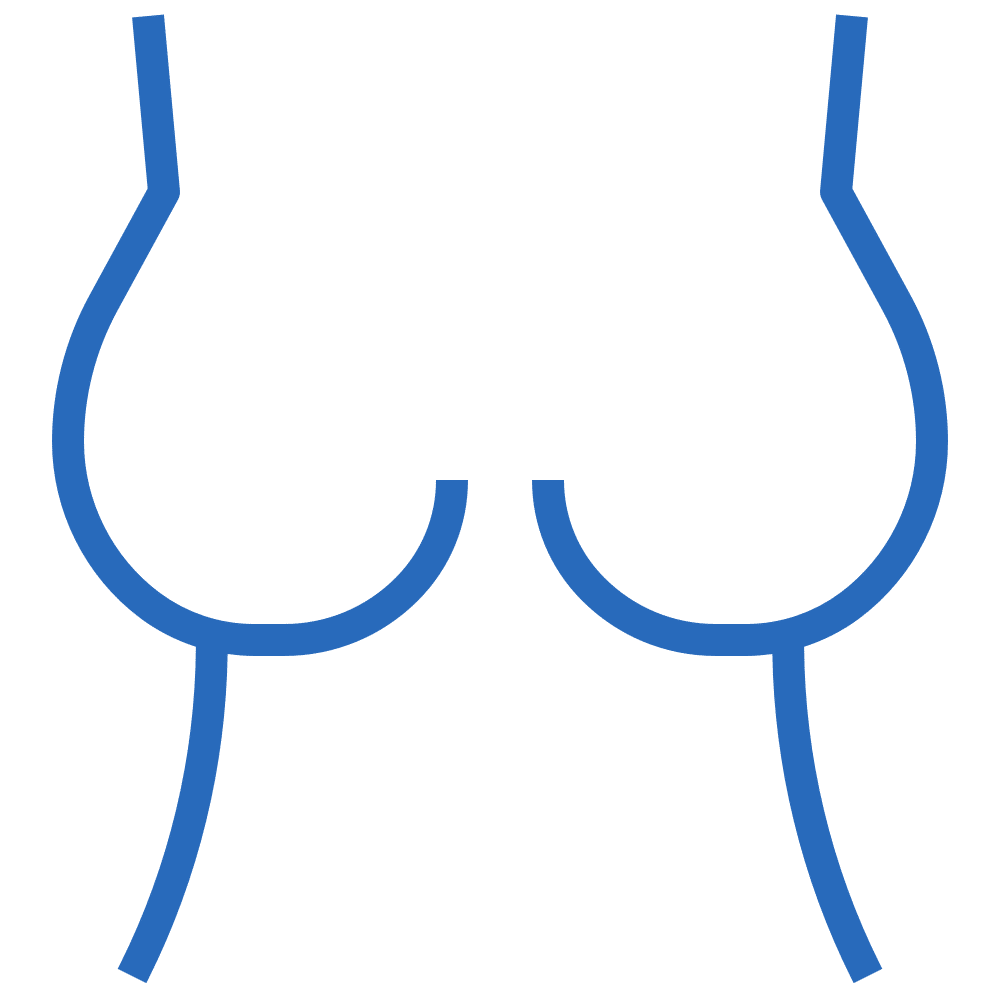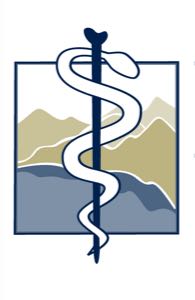Bristol Surgical Specialties
Our surgeons provide true, multi-specialty surgical care, offering you the diagnosis you need so you can get back to being you.
For Physicians: complete our referral form

What We Do
General & Vascular Surgery
General Surgery
General Surgery is a specialized area in the broad field of surgery, which includes a wide range of procedures on the neck, chest, abdomen, and extremities. General surgery procedures can be grouped in to the following categories:
- Oncology involves the diagnosis and treatment of both benign and malignant tumors.
- Gastrointestinal Surgery involves the diagnosis and treatment of diseases of the intestinal tract including the stomach, colon, rectum, pancreas, liver, gallbladder and biliary system.
- The Spectrum of General Surgery involves a wide variety of procedures including upper and lower endoscopy, open or minimally invasive (laparoscopic or robotic assisted) bowel or abdominal surgery, removal of skin lesions or soft tissue tumors and endocrine organs, such as the thyroid, parathyroid or adrenal glands.


Vascular Surgery
Vascular Surgery refers to surgery of the body’s blood vessels, excluding the heart. Vascular surgery procedures can be grouped in to the following categories:
- Stroke related procedures involve improving the circulation of the brain, carotid arteries and vertebral arteries.
- Arterial blockage treatment involves improving circulation to the arms or legs through the removal of arterial plaque, balloon dilation, bypass grafting or stenting.
- Vein disorder therapy involves treating troublesome superficial and deep veins. This may involve medical treatment, placement of surgical devices, minimally invasive or open procedures.
- Vascular Access Surgical procedures enable prolonged chemotherapy, antibiotic or dialysis treatments.
Common Surgeries

Gallbladder Removal

Hernia Repair

Breast Surgery

Esophagus, Stomach and Bowel Surgery

Upper or Lower Endoscopy (EGD or Colonoscopy)
Comprehensive Surgical Specialities
Jump to:
General Surgeries
Gallbladder Removal
Symptoms & Description: If you’re having pain or nausea after meals, you might have problems with your gallbladder. A Cholecystectomy is surgery to remove the gallbladder. A gallbladder may need to be removed if the organ has developed troublesome gallstones, if it is infected, not functioning properly, or if there is concern for cancer.
Surgical options: Our surgeons have the capability of removing the gallbladder laparoscopically, robotically with the da Vinci robot, or with a traditional open surgical approach. Our surgeons will have a detailed consultation with you to determine the best approach.
Typical Recovery: Varies by technique. Quick recovery with robotic and laparoscopic approaches. Usually this is a same-day, out-patient surgery. No heavy lifting for 2-4 weeks.
Appendectomy
Symptoms & Description: If you develop sudden pain in the right lower portion of the abdomen it may be due to a problem with your appendix. Many patients with appendix problems also experience a loss of appetite, nausea and/or vomiting. The most common reason for removal of the appendix is appendicitis. Appendicitis is swelling or inflammation of the appendix which may cause a minor or severe infection. Appendicitis is a common cause of emergency surgery. The problem most often occurs when the opening of the appendix becomes blocked. Rarely blockages of the appendix can also come from a mass.
Surgical options: Our surgeons have the capability of removing the appendix laparoscopically, robotically with the da Vinci robot, or with a traditional open surgical approach. Our surgeons will have a detailed consultation with you to determine the best approach.
Typical Recovery: Varies by technique. Quick recovery with robotic and laparoscopic approaches. Usually this is a same-day, out-patient surgery. No heavy lifting for 2-4 weeks.
Hemorrhoidectomy
Symptoms & Description: If you have pain or bleeding from the anus or rectum you may have a problem with hemorrhoids. This problem is very common and may be uncomfortable and frustrating to deal with. Constipation or diarrhea may make the symptoms worse. Sometimes hemorrhoids can remain stuck outside and cause a lot of pain.
Surgical options: Your surgeon may initially choose to prescribe medication to treat your hemorrhoids. If this does not work, they may discuss banding the hemorrhoids (a less invasive procedure) or performing a hemorrhoidectomy.
Typical Recovery: This is generally a longer and more painful recovery. Can be uncomfortable for up to 2 weeks. For patients who suffer from prolonged hemorrhoid symptoms, this procedure is often worth it.
Hernia Repair
Symptoms & Description: There are many types of hernias but most hernias are weakened areas in the abdominal wall. They may feel like a painful bulge or knot and can sometimes cause blockages if the intestine becomes trapped inside the hernia.
Types of Hernias: The most common types of hernias we see are:
- Ventral Hernia – in the front of the abdomen
- Incisional Hernia – usually arises in the abdominal wall where a previous surgical incision was made
- Inguinal Hernia – located in the groin, may be on one or both sides
- Umbilical Hernia – near the belly button
- Hiatal Hernia – a widened space in the breathing muscles, between the abdomen and the chest. This type of hernia may contribute to reflux symptoms.
- We also see and treat less common hernias, such as: Flank hernias, Parastomal hernias, Lumbar hernias, Obturator hernias, and Femoral hernias.
Surgical Options: Our surgeons have the capability to perform hernia repair laparoscopically, robotically with the da Vinci robot, or with a traditional open surgical approach. Some hernias are best treated with mesh reinforcement and some do well with stitches alone. Our surgeons will have a detailed consultation with you to determine the best approach.
Typical Recovery: Varies by approach. Quick recovery with robotic and laparoscopic approaches. Some will be same-day, out-patient surgery. Others may require a brief, in-patient hospital stay. No heavy lifting for 4-6 weeks.
Colonoscopy
Symptoms & Description: Many patients that need a colonoscopy do not have symptoms. It is a screening test to look inside the colon and rectum to look for sources of pain, bleeding, or cancerous growths. Colonoscopy can detect inflamed tissue, ulcers, and abnormal growths.
The Procedure: In most cases, a light sedative, and possibly pain medication, helps keep you relaxed. Deeper sedation may be required in some cases. We aim to make sure you’re as comfortable as possible during the procedure.
Typical Recovery: No driving or operating heavy machinery for 24 hours.
Upper Endoscopy (EGD)
Symptoms & Description: Patients with history of reflux, gastritis, or ulcer disease may need this procedure to make a diagnosis. Patients may also need this procedure to diagnose the source of their anemia.
The Procedure: Esophagogastroduodenoscopy (EGD) is a test to examine the lining of the esophagus (the tube that connects your throat to your stomach), stomach, and first part of the small intestine. It is done with a small camera (flexible endoscope) that is inserted down the throat.
Typical Recovery: No driving or operating heavy machinery for 24 hours.
Breast Biopsy / Lumpectomy / Mastectomy
Symptoms & Description: Breast problems that require surgery may present as a new finding on mammogram, a lump in the breast, abnormal drainage from the nipple or even skin changes.
The Procedure(s): To make a diagnosis your surgeon may recommend surgical biopsy or image guided biopsy by a radiologist. The two main surgical approaches are breast conservation therapy (lumpectomy) in which only the tumor is removed from the breast, or mastectomy which removes all of the breast tissue. Deciding between mastectomy and lumpectomy can be difficult. Many patients will also need to have a lymph node biopsy at the time of the breast surgery to determine if there are any signs of spread to the lymph nodes beneath the arm. Your surgeon is here to help you make the best choice for you.
Typical Recovery: Many patients will be able to go home the day of surgery after lumpectomy. Many mastectomy patients will be observed overnight, though this is a case by case decision. It is important to avoid strenuous activity of the arm on the side of the surgery for a few weeks after the procedure, particularly if a lymph node biopsy is performed. Following breast cancer surgery, it is important for patients to follow recommendations from the multidisciplinary tumor board such as radiation therapy and possibly chemotherapy when appropriate.
Vascular Surgeries
Carotid Endarterectomy
Symptoms & Description: Carotid endarterectomy (CEA) may be recommended if you’ve had a transient ischemic attack (TIA) or a mild stroke due to moderate or severe blockage of a carotid artery. If you are diagnosed with carotid artery disease or have these symptoms, a carotid endarterectomy can be highly beneficial in preventing future strokes.
The Procedure: Carotid Endarterectomy is the surgical procedure to remove blockage from carotid arteries, the arteries located in the neck that supply blood to the brain.
Typical Recovery: Carotid endarterectomy is usually well-tolerated. Many patients have changes in their blood pressure that have to be closely monitored overnight in the hospital. If there are no complications many patients will be able to go home the following day.
Abdominal Aortic Aneurysm Repair
Symptoms & Description: An Abdominal Aortic Aneurysm (also called AAA or Triple A) is a bulging, weakened area in the wall of the aorta. The aorta is the largest artery in the body, and an AAA means there is an abnormal widening or ballooning greater than 50 percent of the vessel’s normal diameter (width). You many need AAA repair to prevent the risk of rupture, to relieve symptoms, or to restore a good blood flow.
The Procedure: Abdominal Aortic Aneurysm (AAA) repair is a procedure used to treat an aneurysm (abnormal enlargement) of the abdominal aorta. Repair of an abdominal aortic aneurysm may be performed surgically through an open incision or via a procedure called Endovascular Aneurysm Repair (EVAR).
Typical Recovery: Varies by approach and patient risk factors. If there are no complications, many patients are able to go home a day or two after endovascular repair. Recovery is typically a little longer after open surgery and may require several days in the hospital after surgery.
Peripheral Vascular Bypass Surgery
Symptoms & Description: This surgery is performed when the buildup of fatty deposits (plaque) in an artery has blocked the normal flow of blood that carries oxygen and nutrients to the lower extremities. A surgical bypass may help you if you have symptoms such as leg muscle pain while walking; pain at night, especially in the feet (rest pain); feet and leg sores that won’t heal; and dead tissue (gangrene).
The Procedure: A peripheral vascular bypass, also called a lower extremity bypass, is the surgical rerouting of blood flow around an obstructed artery that supplies blood to the legs and feet. Bypass surgery reroutes blood from above the obstructed portion of an artery to another vessel below the obstruction.
Typical Recovery: Varies, but most patients will need to be monitored for a few days after surgery.
Port-a-Cath Placement
Symptoms & Description: If you need frequent intravenous (IV) medicines or blood draws — or both — your healthcare provider may recommend a port-a-cath placement. A port is a small medical device that allows providers easy, reliable access to administer medicine (like chemotherapy) to you directly into your veins. It makes taking blood samples easier and is generally more comfortable for the patient than multiple needle sticks.
The Procedure: The catheter of the port sits inside a large central vein. Before using, the skin over the port is cleaned and then a special needle is used to puncture the port, which is connected to the catheter. After every infusion/injection, the port is flushed with heparin solution or once every 4 weeks if the port is not used regularly.
Typical Recovery: Same day surgery, outpatient procedure
Iliac Aneurysm Repair
Symptoms & Description: An iliac aneurysm is bulging and weakness in the wall of the iliac artery, a group of arteries located in the pelvis. Iliac aneurysms can burst, which can cause life-threatening, uncontrolled bleeding. If you have an iliac aneurysm, you may have no symptoms (about half of people do not have symptoms). For those who do have symptoms, they may include: back pain, lower abdominal pain, or groin pain.
The Procedure: The primary goal of treatment is to prevent iliac artery rupture, which is associated with high mortality rates. When iliac artery aneurysm repair is needed, an open surgical or endovascular approach can be used. Our surgeons will have a detailed consultation with you to determine the best approach.
Typical Recovery: Varies by approach and patient risk factors. If there are no complications, many patients are able to go home a day or two after endovascular repair. Recovery is typically a little longer after open surgery and may require several days in the hospital after surgery.
In-Office Procedures
Basal Cell / Squamous Cell Skin Excisions
Symptoms & Description: Your skin may show indicators of basal or squamous cell skin cancers, like: Flat, firm, pale or yellow areas, similar to a scar; Raised reddish patches that might be itchy; or Small, pink or red, translucent, shiny, pearly bumps, which might have blue, brown, or black areas.
The Procedure: Surgical excision is used to treat all types of skin cancer. It can offer results that are both medically and cosmetically excellent. The surgeon begins by outlining the tumor with a marking pen. A “safety margin” of healthy-looking tissue will be included, because it is not possible to determine with the naked eye how far microscopic strands of tumor may have extended. The extended line of excision is drawn, so the skin may be sewn back together. The surgeon will administer a local anesthetic, and then cut along the lines that were drawn. The entire procedure takes about thirty minutes for smaller lesions. The tissue sample will be sent to a lab, to see if any of the “safety margins” has been invaded by skin cancer. If this is the case, it is assumed that the cancer is still present, and additional surgery is required.
Typical Recovery: Wounds heal rapidly, usually in a week or two. Scarring depends on many factors, including the placement of the tumor and your care of the wound after the procedure.
Port-a-Cath Removal
Description: If you have a port-a-cath placement, we can provide a procedure under local anesthetic where a small incision is made and the port is removed. This is normally an in-office procedure, but each patient is evaluated on their individual comfort level and this procedure can also be scheduled in the operating room.
Vasectomy
Description: A vasectomy is a surgical procedure to permanently sterilize a man. During the procedure the vas deferens, or the tube carrying the sperm, is cut and ties through a tiny opening in the scrotum. Follow up tests such as a sperm count are required about 4-6 weeks post procedure until there is a valid lab test showing that there is no sperm present. At this time a man is considered sterile.
Typical Recovery: Complications from a vasectomy are rare.
In Office Excisions (Moles, Skin Tags, Cyst, and Lipoma)
Description: Excision biopsy is necessary when the mole is flat, or when a cancer is suspected (e.g., melanoma). The full depth of the mole is removed and the wound is sutured. The specimen is then sent to a lab for pathological examination.
Ingrown Toenails
Description: Minor ingrown toenails may require simply trimming back the protruding nail sliver or piece away from the nail fold. More aggressive, debilitating cases may require a minor surgical procedure called partial nail matricectomy. Surgery should be considered as last resort after conservative local treatments have failed. Nail surgery may cause permanent nail deformity, poor cosmetic appearance, and other possible complications.
Temporal Artery Biopsy
Description: A temporal artery biopsy is a procedure in which a small piece of tissue is removed from your temporal artery and then studied under a microscope to check for signs of inflammation and damage. A temporal artery biopsy is recommended when the doctor believes a person may have temporal arteritis (also known as giant cell arteritis or cranial arteritis).
Short Stay & Inpatient Procedures
Laparoscopic or Robotic-Assisted Nissen Fundoplication & Hiatal Hernia Repair
During the Fundoplication surgery, the surgeon improves the natural barrier between the stomach and the esophagus by wrapping a part of the stomach known as the gastric fundus around the lower esophagus. This prevents the flow of acids from the stomach into the esophagus, and strengthens the valve between the esophagus and stomach, which stops acid from backing up into the esophagus as easily. This procedure is often done using a laparoscopic surgical technique. It can also be done as traditional (open) surgery. A laparoscope is a fiber-optic instrument that is inserted in the abdominal wall. This device transmits images from within the body to a video monitor, allowing the surgeon to see the operative area on the screen. During this procedure, surgeons use small surgical tools and a small camera to repair the muscle that prevents the stomach from going into the chest and causing reflux.
Laparoscopic or Robotic-Assisted Sigmoid Colectomy
The colon (large intestine) is the last part of your digestive tract. This part of the bowel works to soak up water and store food waste. The colon is a tube-like muscle. This tube has a very smooth lining. The lining is made up of millions of cells. The colon in an adult is about 4 – 6 feet long. The rectum is the last 6 inches of the colon. A Colectomy is surgery to remove all or part of your colon.
Right Hemicolectomy
- Part or all of the ascending colon and cecum are removed. The colon is then reconnected to the small intestine.
Left Hemicolectomy
- Part or all of the descending colon is removed. The transverse colon is then reconnected to the rectum.
Sigmoid Colectomy
- Part or all of the sigmoid colon is removed. The descending colon is then reconnected to the rectum.
Low Anterior Resection
- The sigmoid colon and a portion of the rectum is removed. The descending colon is reconnected to the remaining rectum.
Abdominal Perineal Resection
- Part of or all of the sigmoid colon and the entire rectum and anus are removed. A colostomy will be made. A colostomy creates an opening in your stomach wall so waste can pass from the body.
Perirectal Abscess / Perianal Abscess
The abscess can be treated by a method called an “incision and drainage” or actually excised.
A perirectal abscess is a collection of pus in the deep tissues surrounding the anus. By contrast, a perianal abscess is a shallower collection of pus under the skin surrounding the anus; however, both are sometimes described as an anal abscess.
Perirectal and perianal abscesses are thought to develop from the glands surrounding the anus; on occasion, perianal abscesses may develop from infected skin adjacent to the anus. Glands may plug up, usually leading to bacterial infection. When the glands fill with pus, they may burst inward, releasing their infected contents into the spaces around the rectum and anus. This pus causes an abscess, or pus collection, in the spaces surrounding the rectum or anus. The anal abscess may enlarge, causing pain, fever, and difficulty with bowel movements.
Thyroid & Parathyroid Surgery
Thyroidectomy
Thyroidectomy is a surgical procedure in which all or part of the thyroid gland is removed. The thyroid gland is located in the lower neck area just beneath the Adam’s apple. The thyroid is one of the body’s endocrine glands, which means that it secretes important hormones that the body needs. If the thyroid is not working properly you may need medication or surgery to help it function as it should.
Parathyroidectomy
Parathyroidectomy is surgery to remove parathyroid glands or parathyroid tumors. The parathyroid glands are right behind your thyroid gland in your neck. These glands help your body control calcium levels in the blood.

